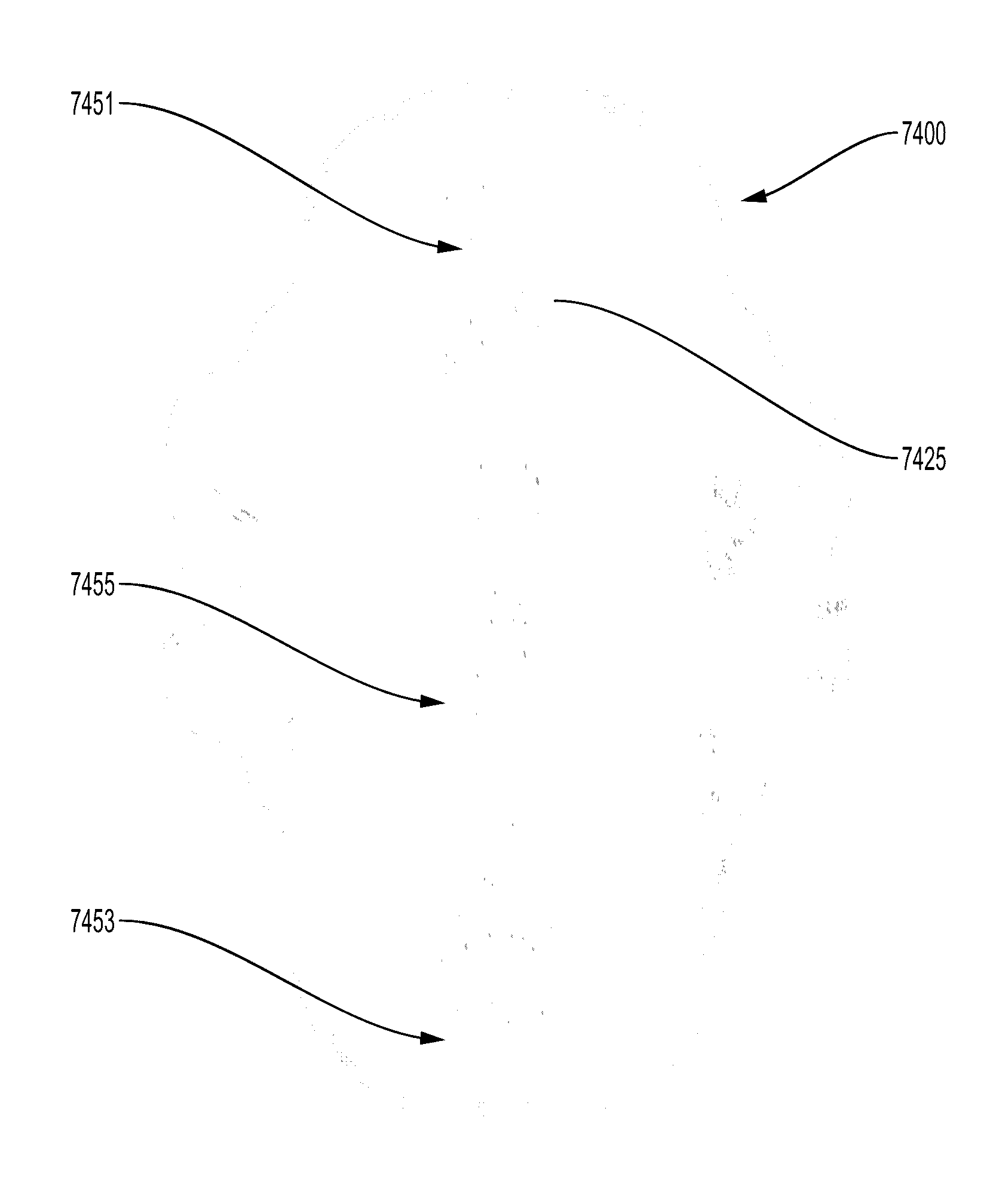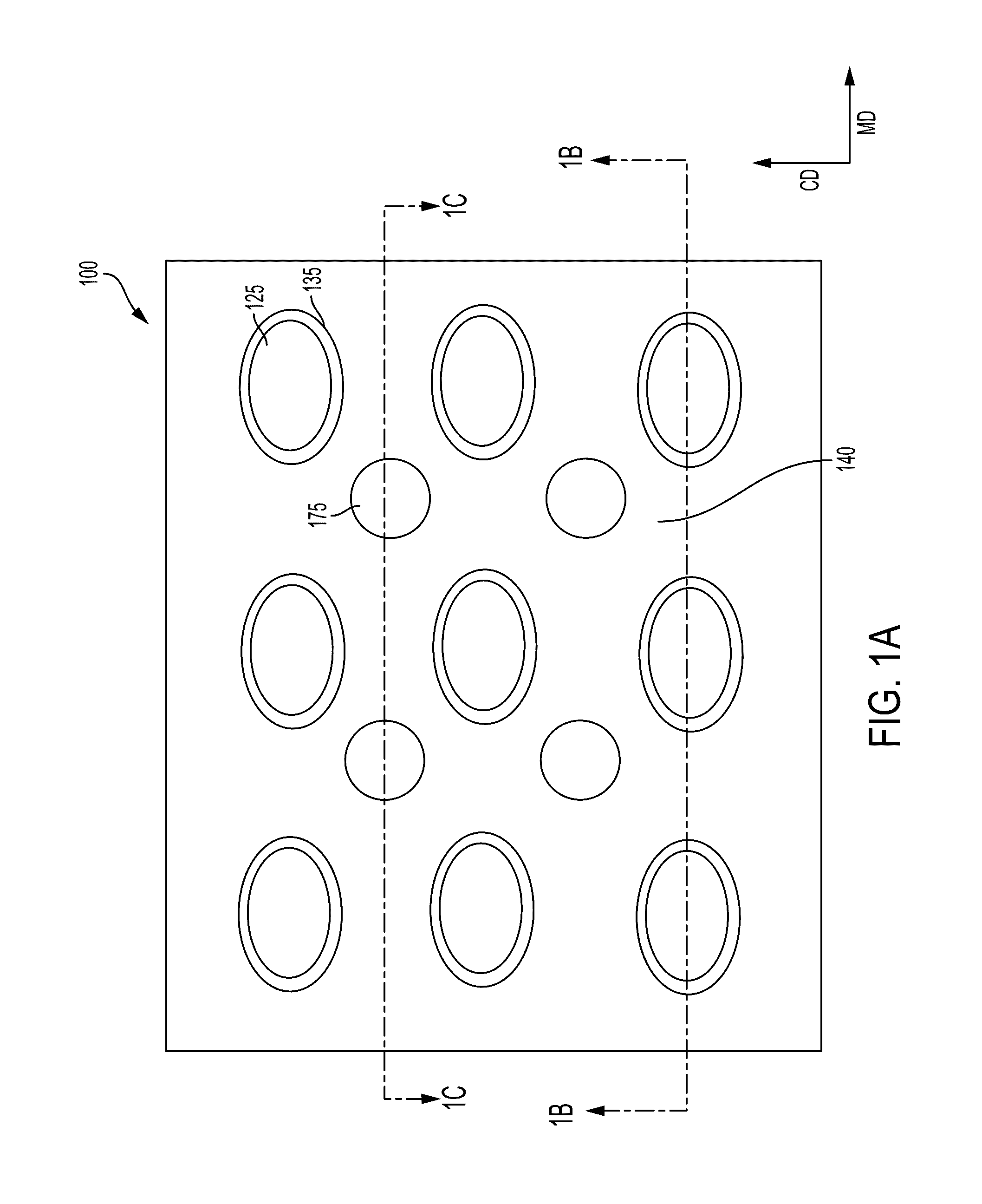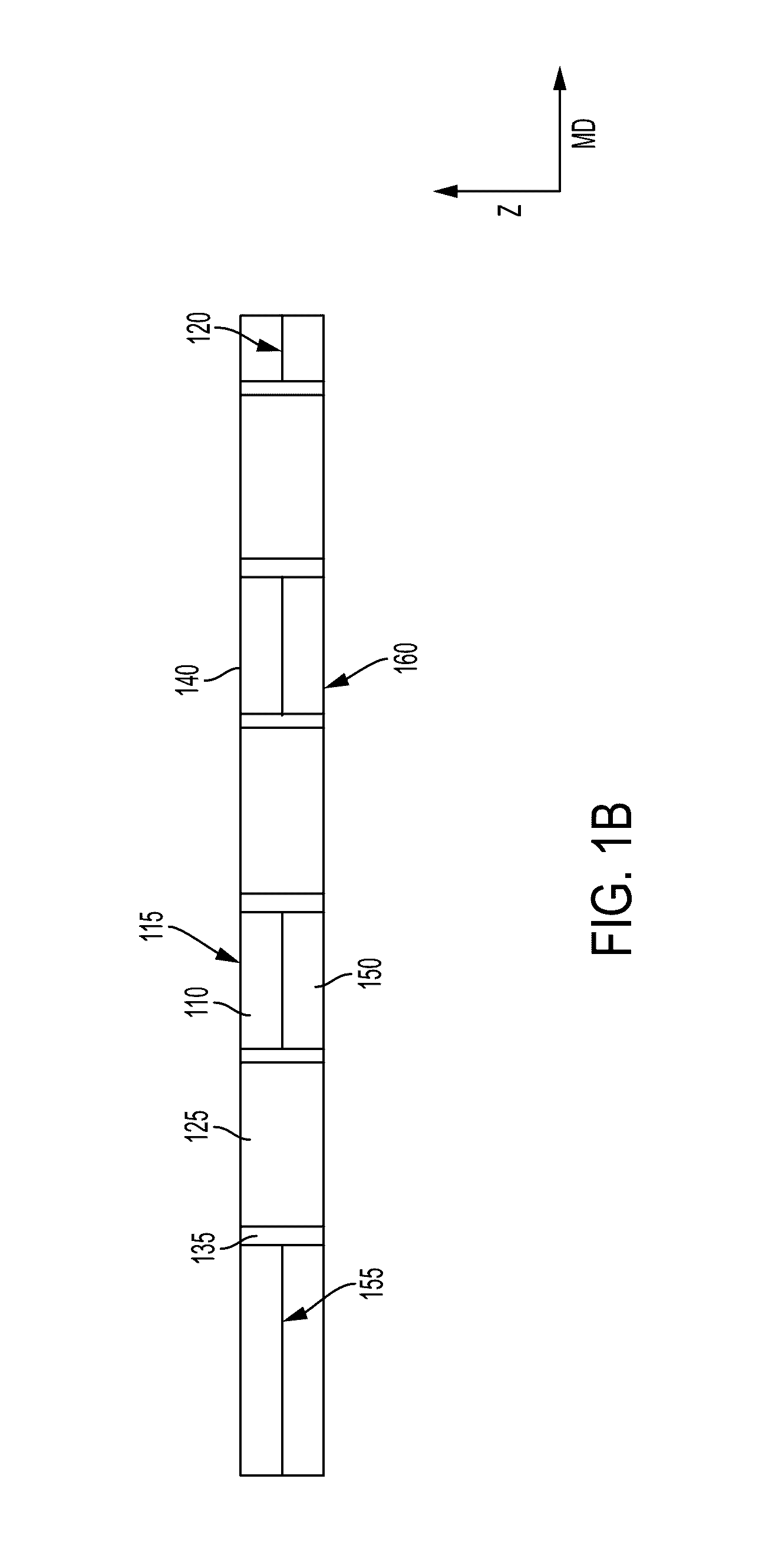Absorbent articles with color effects
a technology of absorbent articles and color effects, which is applied in the field of absorbent articles with color effects, can solve the problems of difficult printing or color on the absorbent article to coincide with a desired feature, introduce manufacturing complexities, etc., and achieve good masking effects
- Summary
- Abstract
- Description
- Claims
- Application Information
AI Technical Summary
Benefits of technology
Problems solved by technology
Method used
Image
Examples
example 1
[0331]Referring back to FIG. 35A, the sanitary pad 4400 was created utilizing a white nonwoven upper layer with a basis weight of 25 gsm and a lower nonwoven layer of light purple having a basis weight of 20 gsm. The layers were laminated and used as the topsheet 4410 of the sanitary pad 4400. Averages of measured L*, a*, b* values for the sanitary pad 4400 is provided below in Table 2A.
TABLE 2ALocationL*a*b*Land942−8Aperture961−5Melt Lip874−8Fusion bond site923−8Tuft inboard of903−10absorbent coreTuft outboard of85−1−9absorbent coreWings79−3−7
[0332]Of particular interest is a first zone 4435, a second zone 4430a, and a third zone 4430b. As shown, a plurality of apertures is disposed in the first zone 4435. And, as discussed previously, in the formation of apertures, stretching of the laminate may occur in the MD and / or CD direction. For the sanitary pad 4400 shown, the stretching in the CD direction appears to have made the first zone 4435 physically lighter in color shade than the...
example 2
[0335]Referring to FIG. 36, a sanitary pad 4500 was created utilizing two white nonwoven layers as a topsheet 4510 of the sanitary pad 4500. Averages of measured L*, a*, b* values for the sanitary pad 4500 are provided below in Table 3. Each of the L*, a*, b* values measured were taken at locations similar to those described in FIGS. 35B-35H.
TABLE 3LocationL*a*b*Land1000−2Aperture980−3Melt Lipn / an / an / aFusion bond site970−2Tuft inboard of99−1−5absorbent coreTuft outboard of90−2−7absorbent coreWings80−3−7
[0336]Note that the melt lip of Example 2 was not able to be captured by the person measuring the color variances of the features of the sanitary pad 4500.
example 3
[0337]Referring to FIG. 37, a sanitary pad 4600 was created utilizing a white nonwoven layer as an upper layer and a peach colored layer (25 gsm) as a lower layer of a laminate. The laminate was utilized as a topsheet 4610 of the sanitary pad 4600. Averages of the measured L*, a*, b* values for the sanitary pad 4600 are provided below in Table 4A. Each of the L*, a*, b* values measured on the sanitary pad 4600 were taken at locations similar to those described in FIGS. 35B-35H.
TABLE 4ALocationL*a*b*Land9843Aperture9810Melt Lip9456Fusion bond site9922Tuft inboard of9776absorbent coreTuft outboard of9430absorbent coreWings81−3−7
[0338]Similar to the lightening effect discussed with regard to FIG. 35A, a similar lightening effect in a first zone 4635 may occur with respect to a second zone 4630a and a third zone 4630b. Table 4B shows the average L*, a*, b* values measured for the first zone 4635 and second and third zones 4630a and 4630b, respectively with a 101×101 pixels averaged per ...
PUM
 Login to View More
Login to View More Abstract
Description
Claims
Application Information
 Login to View More
Login to View More - R&D
- Intellectual Property
- Life Sciences
- Materials
- Tech Scout
- Unparalleled Data Quality
- Higher Quality Content
- 60% Fewer Hallucinations
Browse by: Latest US Patents, China's latest patents, Technical Efficacy Thesaurus, Application Domain, Technology Topic, Popular Technical Reports.
© 2025 PatSnap. All rights reserved.Legal|Privacy policy|Modern Slavery Act Transparency Statement|Sitemap|About US| Contact US: help@patsnap.com



